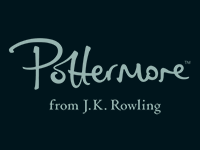Back to the Harry Potter universe
by Pedro MartinsThe first Fantastic Beasts does not have direct references to Harry Potter, but from the Crimes of Grindelwald on, both Harry’s and Newt’s worlds will start to merge – which, according to the director David Yates, is not a strategy to please fans.
“We have always tried to balance new elements to those we already know,” said the director to POTTERISH while he directed the filming, in England. “They’re a part of what we’re doing, but it’s not really where I think Jo’s or my or any of our interests really lie, ultimately. We don’t want to go back to the past unless it is really necessary to the story or some character.”
Hogwarts
The most remarkable reference is Hogwarts. “Bringing the castle back was something that evolved in the developing process. Because we were introducing Dumbledore, it felt right to bring that world back into this one,” said David Yates. “Hogwarts is a very important function of this story, not a sort of way of appeasing the nostalgia factor of the series.”
The castle’s architecture barely changed. “Hogwarts is almost a thousand years old, and there’s only a 70-year difference between Fantastic Beasts and Harry Potter, so it didn’t make much sense to change it,” explains the art supervisor Martin Foley.
The crew had to rebuilt sets seen in Harry Potter, like the Defense Against the Dark Arts classroom, which, throughout the movies, changed to follow each professor’s style. During the time at The Crimes of Grindelwald, the professor of the subject was Dumbledore, so some objects in the set, like the astronomy equipment, were from his office as Headmaster. “It was nice to dust them off and bring them from the exhibition to be used again,” jokes Pierre Bohanna, who coordinated the scene objects production.

Photo: Warner Bros. Pictures/Distribution
Dumbledore’s costume
In the books, Dumbledore wore “long robes, a purple cloak […] and high heeled, buckled boots” – something the films never really followed. From the Prisoner of Azkaban on, the extravagant colors became a single grey and purple tunic and, in Fantastic Beasts, the wizard wears grey and beige clothes, which show seriousness and sympathy.
The costume designer, Colleen Atwood – who won the Academy Award for Fantastic Beasts and Where to Find Them, says the choice for greyer tones is due to the differences between Dumbledore from 1910-1920 to the one in 1990. Jude Law and she had in mind that, during Fantastic Beasts time, he was the favorite professor in school, as he was closer to the students than in Harry Potter. Therefore, his clothes should be less iconic than the ones he wore as headmaster. Atwood aimed for a balance between clothes that were different from other characters, but without extravagance.

Photo: Warner Bros. Pictures/Distribution
Nagini
Another remarkable reference is Nagini. Different from an Animagus, a Maledictus is born with a blood curse, inherited from mother to daughter – which transforms them into animals. Until a certain age, they can control this power. But little by little, they lose this ability and cannot go back into human form.
Nagini met Voldemort between 1991 and 1994 – years in which the Philosopher’s Stone and Goblet of Fire are set – in a forest in Albania, where the Dark Lord found refuge after losing Professor Quirrell’s body. With Berta Jorkins’ murderer, close to the Quidditch World Cup, Voldemort transforms Nagini into a Horcrux. As Harry Potter is set almost 70 years after Fantastic Beasts, it is understood that she could no longer return to human form.

Photo: Warner Bros. Pictures/Distribution
Read more:
- Get to know 5 new creatures from Fantastic Beasts
- The Crimes of Grindelwald | Why is the film set in Paris?
- Callum Turner changed J.K. Rowling’s plans for Theseus Scamander
- The day we visited the Fantastic Beasts filming set
Written by J. K. Rowling, Fantastic Beasts: The Crimes of Grindelwald hits the theaters worldwide on November 16.
Pedro Martins is a journalism student and Chief editor at Potterish. He was invited by Warner Bros. to travel to England to visit the set.
Collaborators: Beatriz Franco, Caroline Dorigon, Marina Anderi, Nuara Costa and Rodrigo Cavalheiro
Portuguese version edited by Renato Ritto and Wendell Setubal
Translated into English by Nuara Costa
Edited by Aline Michel
















